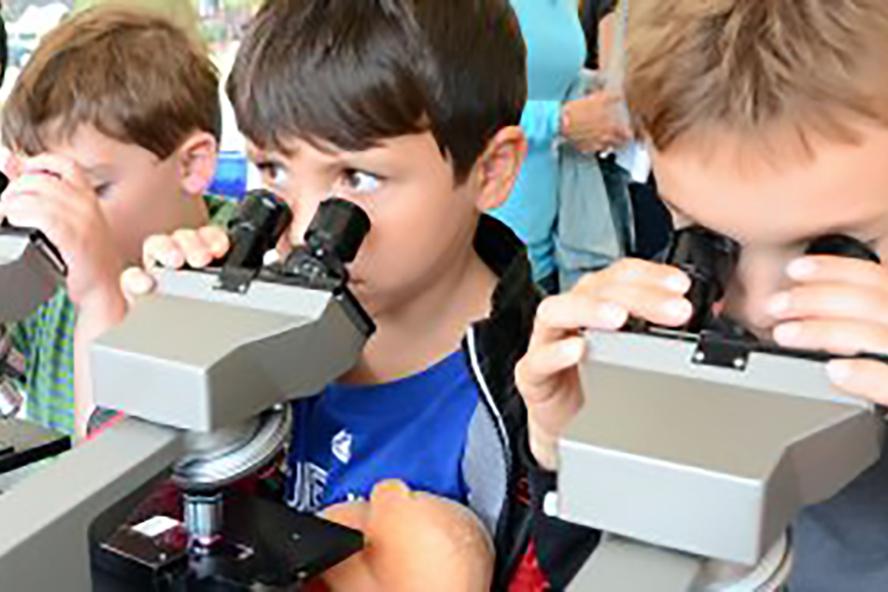-
About
- Leadership & Faculty
- News & Events
-
Academics
- Graduate
- Advanced Clinical Training
- Continuing Education
- Academic Departments
- Academic Offices
- Simulation Experiences
-
Student Life
-
Research
-
Hospitals & Clinics
- Emergency Care
- Hospital Services
-
Community Outreach
- Volunteer
Introducing Science and Veterinary Medicine to Middle Schoolers
Cummings School’s Gap Junction influencing and inspiring young minds

Each year, veterinary students participating in Gap Junction, a Cummings School student organization, help local middle school students explore science and veterinary medicine through biology-based labs.
“It’s mutually beneficial to our students to teach these kids about medicine and for the kids to learn from our students,” says Elizabeth Byrnes, professor of comparative pathobiology, who served as Gap Junction’s faculty advisor for the past 10 years before passing the reins to Ariana Hinckley-Boltax, assistant professor of comparative pathobiology.
According to Byrnes, approximately 100–120 middle school students from Grafton, Shrewsbury, and Worcester come to campus for a total of four sessions each. Between six and eight veterinary student members of Gap Junction make presentations to the middle schoolers.
“Our students present basic body systems—cardiology, GI (gastro-intestinal) and the central nervous system—the first week, then the pathology of body systems during the second week,” she explains. The third week includes hands-on work with an engineering component, and the fourth week is a tour of the farms and anatomy lab. “By the end, they’ve had a substantial introduction to veterinary medicine, the sciences in general, as well as aspects that are unique to our campus.”
The veterinary students learn how to present material in a format that is both engaging and informative to kids with varying levels of science education, which is helpful training for the students’ future rotations at the Tufts at Tech Community Veterinary Clinic or for the many times throughout their career when they will need to explain complicated medical conditions to their clients, according to Byrnes.
“They have to think about other people’s perspectives before presenting material,” Byrnes contends. “And the middle school students come from different backgrounds and ask really creative questions because they may not have all taken the same science courses or have had the same types of experiences with animals.”
Veterinary students are drawn to the student organization for various reasons. “I joined Gap Junction because I have a love for teaching, which is one of the many reasons why I wanted to become a veterinarian,” says Maria Skoljarev, V23. It is a lifetime of learning and educating others.
“Teaching middle school students about science and veterinary medicine was a great experience,” she continues. “After sharing a lecture about the heart, I let a student use my stethoscope and they were amazed to hear their own heartbeat. After the conclusion of the program, several students expressed that they want to become a doctor. That was an incredible feeling.”
The student organization is named for the electrical synapse that allows communications between two cells. They are found in the brain and the heart, among other organs.
For more information about Gap Junction, contact Dr. Hinckley-Boltax.